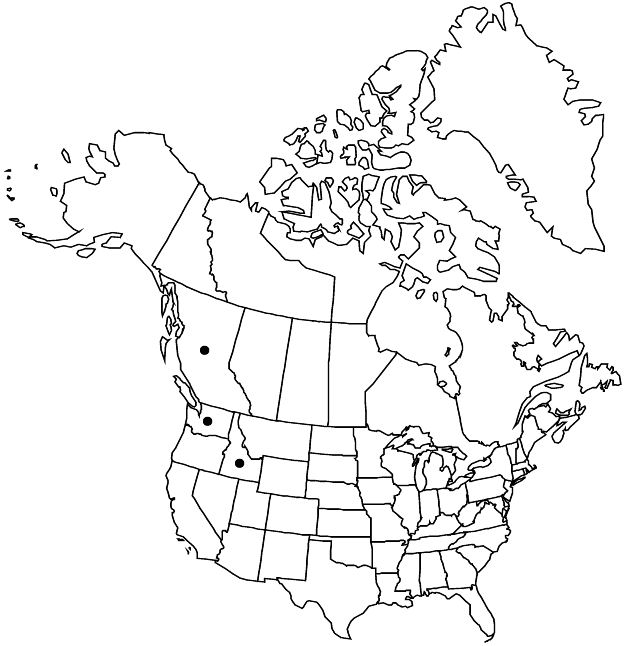Difference between revisions of "Crataegus okanaganensis"
Sida 18: 178, figs. 5, 9d–f. 1998.
FNA>Volume Importer |
FNA>Volume Importer |
||
| Line 13: | Line 13: | ||
}}{{Treatment/ID/Special_status | }}{{Treatment/ID/Special_status | ||
|code=F | |code=F | ||
| − | |label= | + | |label=Illustrated |
}} | }} | ||
|basionyms= | |basionyms= | ||
| Line 52: | Line 52: | ||
-->{{#Taxon: | -->{{#Taxon: | ||
name=Crataegus okanaganensis | name=Crataegus okanaganensis | ||
| − | |||
|authority=J. B. Phipps & O'Kennon | |authority=J. B. Phipps & O'Kennon | ||
|rank=species | |rank=species | ||
| Line 63: | Line 62: | ||
|publication title=Sida | |publication title=Sida | ||
|publication year=1998 | |publication year=1998 | ||
| − | |special status=Endemic; | + | |special status=Endemic;Illustrated |
| − | |source xml=https://jpend@bitbucket.org/aafc-mbb/fna-data-curation.git/src/ | + | |source xml=https://jpend@bitbucket.org/aafc-mbb/fna-data-curation.git/src/f50eec43f223ca0e34566be0b046453a0960e173/coarse_grained_fna_xml/V9/V9_847.xml |
|subfamily=Rosaceae subfam. Amygdaloideae | |subfamily=Rosaceae subfam. Amygdaloideae | ||
|tribe=Rosaceae tribe Gillenieae | |tribe=Rosaceae tribe Gillenieae | ||
Revision as of 22:44, 16 December 2019
Shrubs, often multi-trunked, 30–60 dm. Stems: twigs: new growth sparsely pubescent, 1-year old mid to dark brown; thorns on twigs recurved, deep brown, shiny young, usually stout, 2–4(–5) cm. Leaves: petiole 1–2 cm, sparsely hairy, eglandular or glandular when young; blade glossy especially when young, expanding leaves often reddish, glabrescent, ± ovate to ovate-rhombic or ± oblong, 3.5–6 cm, ± coriaceous, base rounded to cuneate, lobes 0–4 per side (3–4 per side, well defined in ± ovate to ovate-rhombic leaves; 0–3 per side, distinct in apical 1/2 only in ± oblong leaves), lobe apex acute, margins finely, doubly serrate, veins 4 or 5 per side, ± impressed adaxially, apex acute, abaxial surface glabrous, veins hairy, adaxial densely appressed-hairy. Inflorescences 10–20-flowered; branches ± villous, gland-dotted; bracteole margins glandular (glands near base stipitate only in larger bracteoles). Flowers notably cup-shaped young, 12–15 mm diam.; hypanthium villous (at base) or glabrous; sepals narrowly triangular, 4–6 mm, margins finely glandular-serrate, abaxially sparsely hairy; stamens 5 or 10, anthers ivory, rarely very pale pink; styles 2–4. Pomes bright red young (mid late Aug), older usually burgundy to deep purple, sometimes almost black (mid Sep), ovoid and 8 mm diam., or orbicular and 10 mm diam., glabrous or hairy; sepals reflexed, sometimes erect-patent, narrow, 5–7 mm; pyrenes 2–4, sides ± eroded.
Distribution

w North America.
Discussion
Varieties 2 (2 in the flora).
Crataegus okanaganensis is widely distributed and common from the Okanagan valley of southern British Columbia and northern Washington to northern Idaho.
Selected References
None.
Key
| 1 | Leaf blades ± ovate to ovate-rhombic, lobes well defined; leaves ± bronze in fall; pomes pendent, ovoid. | Crataegus okanaganensis var. okanaganensis |
| 1 | Leaf blades ± oblong, lobes absent or short and only in distal 1/2; leaves crimson or pink burgundy in fall; pomes ± erect, orbicular. | Crataegus okanaganensis var. wellsii |